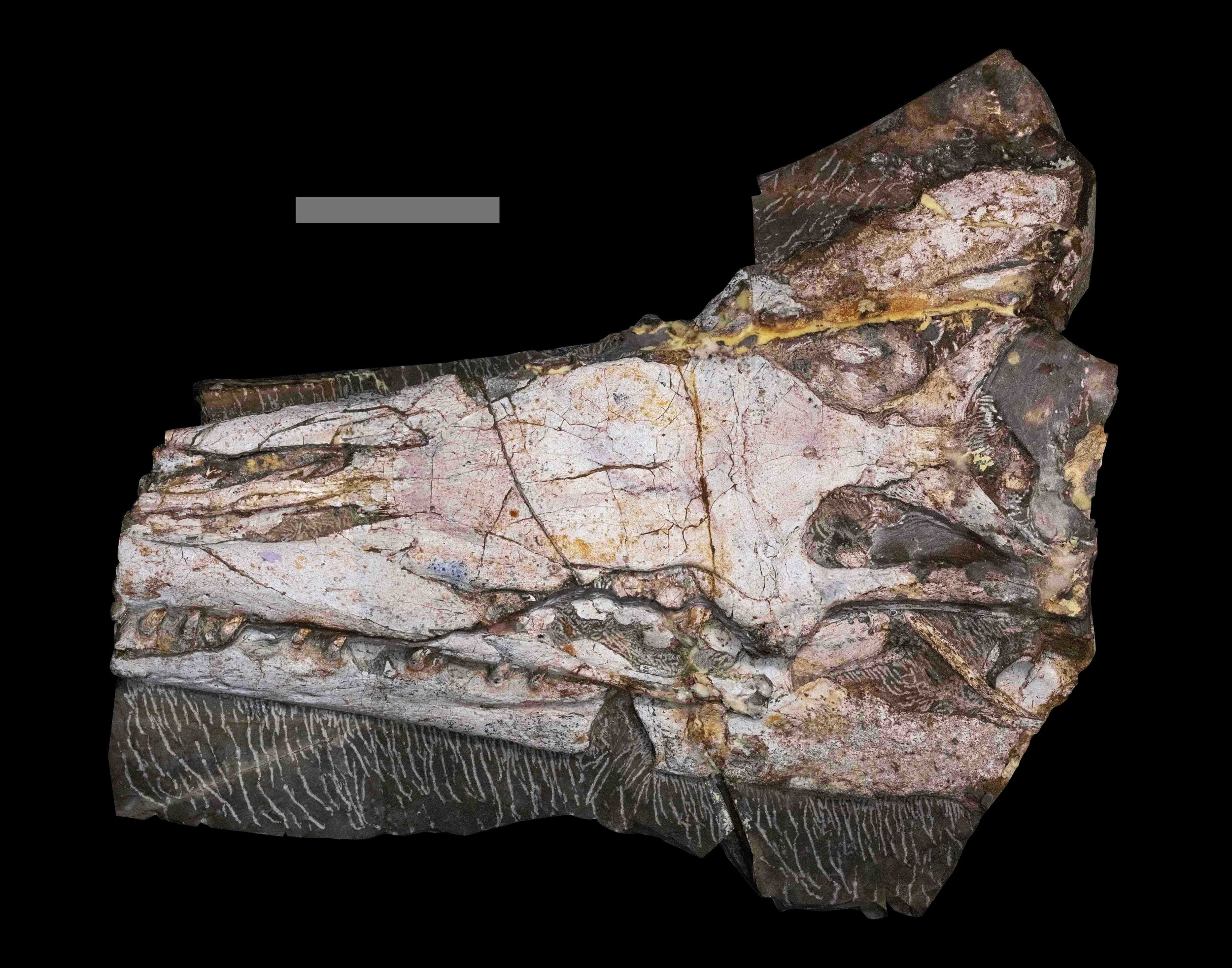A previously unknown “formidable” sea predator that lived about 90 million years ago, during the age of the dinosaurs, has been discovered in Mexico.
The newly identified species, named Yaguarasaurus regiomontanus, is a type of mosasaur—a group of extinct marine reptiles that ruled the oceans in the latter stages of the late Cretaceous period (around 100 million to 66 million years ago).
These prehistoric sea creatures had long, slender bodies, similar to those of modern-day monitor lizards, albeit streamlined for swimming, featuring webbed feet and toes, as well as broad, powerful tails. Capable of reaching high speeds, they were fearsome hunters, with their jaws containing dozens of sharp teeth. The largest mosasaurs may have reached lengths of more than 50 feet.
Mosasaurs disappeared—along with the dinosaurs (apart from birds)—as a result of the mass extinction event that occurred roughly 66 million years ago, which is thought to have been caused by a massive asteroid impact.
The new mosasaur, described for the first time in a paper published in the Journal of South American Earth Sciences, would have been “one of the most formidable predators of its time,” with a diet that likely consisted primarily of fish, study author Héctor Rivera-Sylva—a paleontologist with the Museum of the Desert (MUDE) in Saltillo, Mexico—told Newsweek.
Y. regiomontanus was described based on fossils unearthed on a hill located southwest of the municipality of Vallecillo in Nuevo León state, northeastern Mexico. A quarry worker found the fossil specimen in a pile of debris two years ago before donating it to MUDE for scientific study and keeping.
The specimen, which was encased in hard limestone, consists of a nearly complete skull and jaws. Rivera-Sylva said the sea creature likely reached a length of around 16 feet—roughly the same size as an average female great white shark.
This mosasaur inhabited a large inland sea—known as the Western Interior Seaway—that once split the North American continent into two landmasses during the mid-to-late stages of the Cretaceous period (around 145 million to 66 million years ago).
The anatomy of the new mosasaur places it within a subfamily known as the plioplatecarpines, which survived for a period of around 20 million years prior to the mass extinction event at the end of the Cretaceous period. The scientists also identified that the specimen belonged to the genus, or group of species, known as Yaguarasaurus within this subfamily.
Alongside the fossils of prehistoric fish, sharks and plesiosaurs—another type of extinct marine reptile—the latest discovery “contributes to narrating the story of diversity and evolution of ancient marine life in this region [of Mexico], which is now a semi-desert mountainous area but was once an inland sea during the late Cretaceous” period, Rivera-Sylva said.
Detailed analysis of the skull of the new specimen revealed anatomical differences to Yaguarasaurus columbianus—the only previously known member of its genus.
“These variations, such as the shorter and wider structure of the frontal bone, alongside other distinctive features, provide us with a unique insight into the diversity within this mosasaur species,” Rivera-Sylva said.
Y. regiomontanus was likely one of the earliest large mosasaurs, according to the study, casting light on the evolutionary history of these ancient reptiles.
“This creature speaks about the early emergence and diversification of mosasaurs,” Rivera-Sylva said. “The first mosasaurs appeared around 95 to 100 million years ago. They were small animals, about the size of an iguana, and were non-specialized marine lizards.”

A photograph showing the fossilized remains of Yaguarasaurus regiomontanus—including a nearly complete skull and jaws. The fossil was found in Nuevo León state, northeastern Mexico. © Lucía M. Alfaro 2023
“Within a few million years, they grew much larger and evolved specialized fins and tails to maneuver and pursue prey underwater. They came to dominate the seas until the end of the dinosaur era. What these fossils show is that this radiation occurred incredibly rapidly,” he said.
The latest discovery bridges the gap between the disappearance of older predators—such as the huge pliosaurids, a family of plesiosaurs from the mid-Cretaceous period—and the subsequent evolution of giant mosasaurs toward the end of it.
“Its discovery provides valuable scientific information for a better understanding of mosasaur evolution,” Rivera-Sylva said.
Related Articles
Start your unlimited Newsweek trial
News Related-
Russian court extends detention of Wall Street Journal reporter Gershkovich until end of January
-
Russian court extends detention of Wall Street Journal reporter Evan Gershkovich, arrested on espionage charges
-
Israel's economy recovered from previous wars with Hamas, but this one might go longer, hit harder
-
Stock market today: Asian shares mixed ahead of US consumer confidence and price data
-
EXCLUSIVE: ‘Sister Wives' star Christine Brown says her kids' happy marriages inspired her leave Kody Brown
-
NBA fans roast Clippers for losing to Nuggets without Jokic, Murray, Gordon
-
Panthers-Senators brawl ends in 10-minute penalty for all players on ice
-
CNBC Daily Open: Is record Black Friday sales spike a false dawn?
-
Freed Israeli hostage describes deteriorating conditions while being held by Hamas
-
High stakes and glitz mark the vote in Paris for the 2030 World Expo host
-
Biden’s unworkable nursing rule will harm seniors
-
Jalen Hurts: We did what we needed to do when it mattered the most
-
LeBron James takes NBA all-time minutes lead in career-worst loss
-
Vikings' Kevin O'Connell to evaluate Josh Dobbs, path forward at QB
